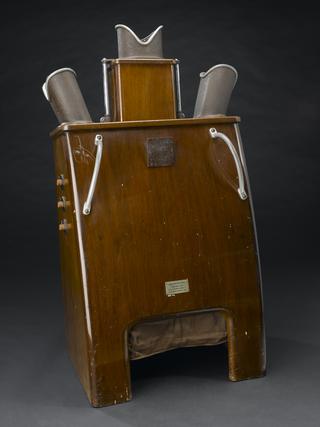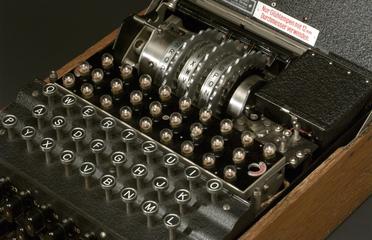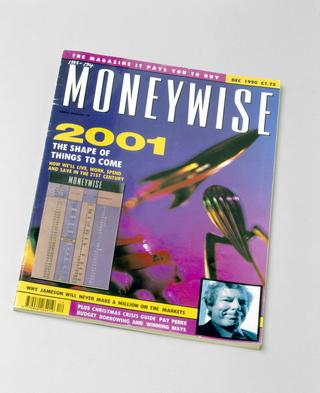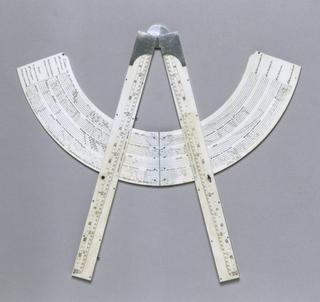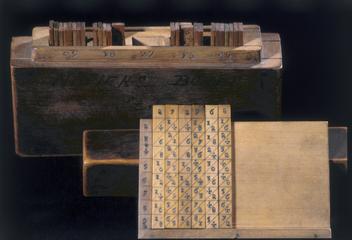
Morland's calculating machine
- maker:
- Samuel Morland


















Morland's calculating machine, engraved "Samuel Morland, Inventor, 1666"; in leather box
Humphrey Adamson, mathemtical instrument maker active 1668-1676, made the calculating machine invented by Samuel Morland.
Morland’s machine was similar to the slightly earlier one of Blaise Pascal, but less complicated and more reliable. He marketed it to the moneyed elite with little mathematical expertise: ‘these incomparable instruments will show them how to play Addition and Subtraction in Lsd and whole numbers without a pen, ink or help of memory.’ Robert Hooke, writing on arithmetical aids in 1673, was dismissive: ‘The best way for addition and subtraction is by setting down the numbers on paper ... for those kinds of operations in arithmetic an instrument is wholly insignificant and at best will come short of common counters.’
Details
- Category:
- Mathematics
- Object Number:
- 1905-109
- Materials:
- brass (copper, zinc alloy), bone, leather, wood (unidentified) and silk
- Measurements:
-
Closed: 50 mm x 120 mm x 150 mm, .23 kg
- type:
- adding machine (stylus)
- credit:
- Major-General H.P. Babbage

